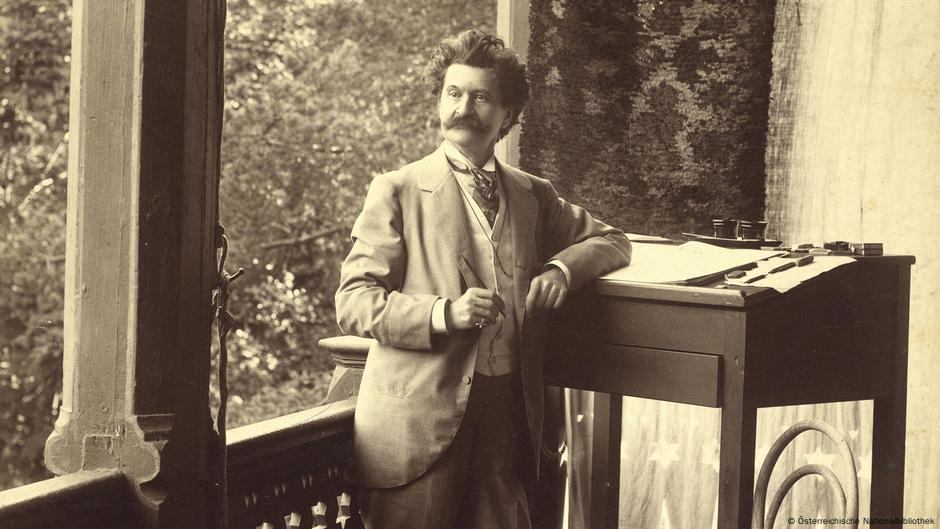Introduction to Johann Strauss II
Johann Strauss II is known worldwide as the “King of the Waltz”. As early as the 19th century, his dance music in three-four time caused a stir and won the hearts of women all over the world. He was a pop star of his time who attracted large young audiences and filled ballrooms. The violinist and composer performed for the Tsarist family in Russia and even toured the USA. He electrified the audience with his violin in hand and even had his own merchandise, including special accessories and memorabilia.
Career Highlights
He composed his famous waltz “The Blue Danube” for the Paris World Exhibition in 1867. He gained worldwide fame in 1872 through his appearance at the World Peace Jubilee Festival in Boston. At this concert he conducted an orchestra of 20,000 musicians in front of 100,000 spectators. To achieve this feat, Strauss enlisted the help of 20 other conductors. Even 200 years after his birth, the composer still enchants the city of Vienna. Numerous events were organized to mark his 200th birthday, including the premiere of the ballet of the same name by director and choreographer Roland Petit on November 18th at the Vienna State Opera as well as exhibitions and the season-ending concert of his operetta “Die Fledermaus” at the Vienna State Opera.
Occupation: Superstar
With the help of his family, the Viennese composer Johann Strauss built a huge entertainment empire. “Strauss pursued his career and his life’s work with great passion and composed late into the night,” explains a research assistant at the Music Department of the Austrian National Library. On the occasion of the composer’s 200th birthday, an exhibition was organized, which also includes letters and photos from the composer. The pressure to perform and the long nights eventually took their toll on Strauss. He collapsed on stage many times and withdrew for days.
In his Father’s Shadow
The efforts that Johann Strauss II had to make to make a name for himself in the music business were enormous. He was born on October 25, 1825 in Vienna to parents who soon divorced. His father, Johann Strauss (Senior), was a respected conductor and composer of Viennese light music, consisting of waltzes, polkas and gallops, including his famous work entitled “Radetzky March”. The younger Strauss was in the shadow of his father, who wanted to forbid his son from pursuing a career as a musician and forbade him to perform. After his father’s death in 1845, Johann Strauss II gradually managed to make a name for himself in the Viennese music scene.
Sympathy for the Revolution
He had a strong instinct for cultivating professional and social relationships, which ultimately led to his success. His home was a meeting place for prominent figures from the world of culture. Strauss was just as close to Richard Wagner as to Wagner’s musical antipode Johannes Brahms, who had good contacts with music publishers. The only thing that slowed down Strauss’s career were his two waltzes “Freiheitslieder” and “Revolutionsmarsch” – his homage to the March Revolution of 1848.
Inner Restlessness and Mood Swings
While Johann Strauss celebrated great success in Europe, Russia and the USA, he was also plagued by self-doubt and inferiority complexes. This emerges from letters to his wives. The composer was married three times. Some of these letters are in the collection of the Austrian National Library. A highlight is a letter from 1882 to his second wife Angelika, called Lili. The letter is incomplete, but a previously unknown caricature that he drew of himself was discovered. Strauss burst into tears; His wife wanted to leave him and finally did.
Strauss’ Waltzes were Appropriated by the Nazis
Johann Strauss wrote popular dance music such as waltzes and polkas until 1870, when he turned more to the stage and composed well-known operettas such as “Die Fledermaus”, “The Gypsy Baron” and “A Night in Venice”. However, his only opera “Ritter Pasman” (Ritter Pazma) was not successful. The Nazis used the waltz as a traditional German folk dance for their political propaganda. During World War II, Johann Strauss’s cheerful waltzes served as a distraction from the horrors of war. For this reason, Nazi propaganda minister Joseph Goebbels even forged documents that referred to Johann Strauss’s Jewish origins. Goebbels simply had the entries deleted. Strauss waltzes are still played today at the Vienna Philharmonic’s traditional New Year’s concert. Ninety public television channels broadcast the concerts worldwide.

